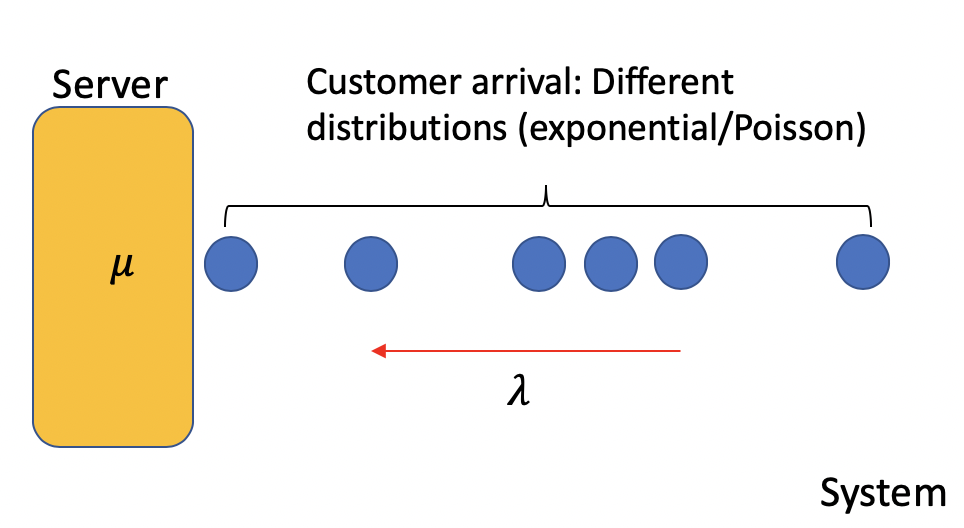Deterministic Queue Visualizations
1. Background
Queues are ubiquitous. From cafeterias, bus stops, to daily traffic, customers have all experienced waiting, and expected to be served as soon as possible ("Demand"). On the other hand, service providers are searching for ways to improve their efficiency ("Supply"). To capture the nuances between demand and supply, simulations can be run to optimize the queuing system. Under the hood, there are many complex equations governing various scenarios. However, they can be greatly simplified without losing much accuracy in calculation. On this page, we will gain some intuitions about queuing system.
2. A Brief Description of Queuing System Modeling

The figure above illustrates a typical queuing system with one server. Customers arrive in a random fashion with expected rate λ, whereas the server processes customers at μ. Such randomness can be approximated stocastically using either exponential or poisson distributions. For large customer flow, such as car traffic at a highway bottleneck, uniform distribution can be applied. In this case, the queuing system is deterministic.
3. Intuition
